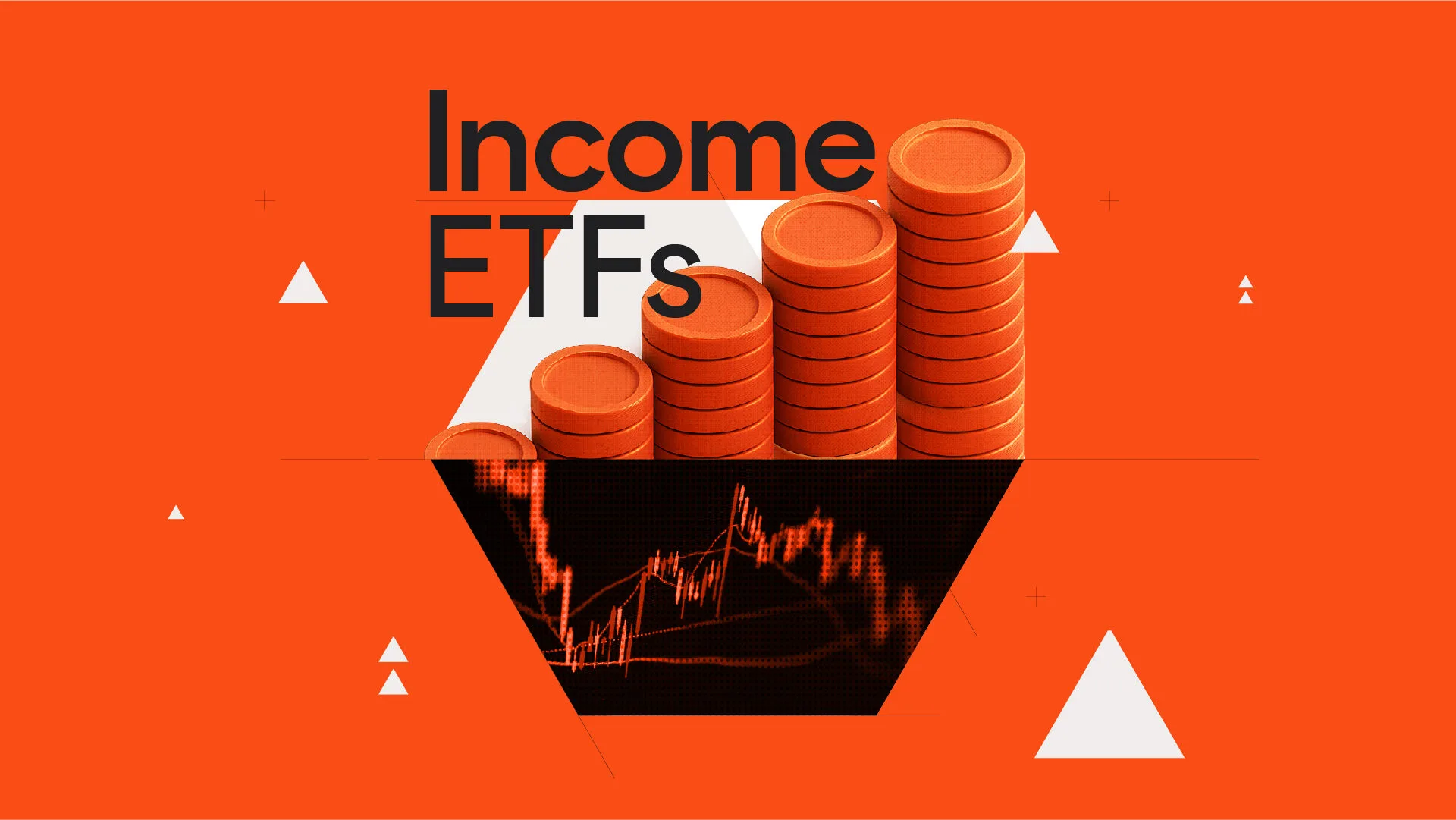5 minutes reading time
Generating a attractive income has become a focus for many Australian investors. With interest rates easing both at home and abroad, earning a meaningful return from term deposits or high interest savings accounts has become far harder, as rates are now well below their mid-2023 peak1.
So where can investors turn to in the hunt for attractive income?
Income focused ETFs can offer a practical and efficient way to achieve attractive income for those investors comfortable with the higher risk of sharemarket investing. .
Why income strategies are evolving
For decades, income investing was seen largely as the domain of retirees to cover essential expenses. Today, that picture is changing. Many younger investors, both here and overseas2, are now using income strategies to supplement their salaries or reinvest distributions to grow wealth over time.
Among ‘Mum and Dad’ investors, for example, inflows into the Betashares income range of ETFs have risen 33% over the past year – and by more than 90% compared with 2022 levels3.
At the same time, households are facing cost of living pressures, with the ABS-issued household savings ratio now well below its long-run average4. Many Australians are finding it harder to set aside money each month, which makes portfolio-based income strategies even more relevant.
Income-focussed equity ETFs can help by aiming to deliver regular distributions that can be taken as cash or reinvested. .
Yield opportunities in a low-rate market
In this environment, we explore three ETFs that seek to provide attractive income on a regular basis.
1. Betashares S&P Australian Shares High Yield ETF (ASX: HYLD)
HYLD S&P Australian Shares High Yield ETF offers exposure to 50 Australian companies with high forecast dividend yields. The fund aims to avoid companies that are projected to pay unsustainably high dividend yields, as well as companies that exhibit high levels of volatility compared to the dividends they are expected to pay. It’s designed as a core Australian share exposure that provides attractive monthly income for investors.
Key facts
- 12-month indicative yield of HYLD’s index as at 30 September 2025: 4.48%5,6
- Screens for sustainable dividend payers to reduce ‘dividend trap’ risk
- Distribution frequency: monthly
2. Betashares Australian Top 20 Equities Yield Maximiser Complex ETF (ASX: YMAX)
YMAX Australian Top 20 Equities Yield Maximiser Complex ETF focuses on generating attractive quarterly income from a portfolio of the 20 largest blue-chip companies listed on the ASX. Many of the fund’s current holdings include Australia’s most high-profile companies including BHP, Commonwealth Bank, CSL and Wesfarmers.7
YMAX employs a covered call strategy to seek to enhance its yield, which could make it appealing to income investors seeking relatively higher yields than the underlying share portfolio over the medium term.
Key facts
- 12-month distribution yield as at 30 September 2025: 7.6% (Gross yield: 9.0%)8
- Total franking level over the 12 months to 30 September 2025: 45.1%9
- Distribution frequency: quarterly
As the YMAX has been designed for investors who prioritise high income over capital growth, income returns can exceed total returns (i.e. income returns plus capital returns) in some circumstances
3. Betashares Global Royalties ETF (ASX: ROYL)
ROYL Global Royalties ETF provides exposure to a portfolio of global companies that earn a substantial portion of their revenue from royalty income, royalty-related income and intellectual property (IP) income. Royalties are payments made to asset owners for the right to use those assets. Originally tied to land and natural resources, royalties have evolved to cover a wide range of assets, including music, pharmaceuticals, technology and more.
By earning royalties instead of operating businesses directly, these companies are able to benefit in the revenue growth of a business while having limited exposure to major operational risks. This business model tends to support strong cash flows, high gross margins and high return on capital.
Key facts
- 12-month distribution yield as at 1 October 2025: 4.4%10
- Exposure to global royalties across multiple industries such as mining, energy and entertainment
- Distribution frequency: monthly
The role of income-focussed ETFs
No matter the life stage or investment goal, income-focussed ETFs can help investors who are seeking attractive income..
In the end, it isn’t simply about chasing yield – it’s about building a future where your income works as hard as you do. To learn more about Betashares’ range of income focussed ETFs, click here.
Disclaimer:
Unlike term deposits, an investment in the Betashares income-focused ETFs does not receive the benefit of any government guarantee. There are risks associated with an investment in the Funds, including market risk, international investment risk, sector risk, royalties related risks, concentration risk, index methodology risk, index tracking risk and use of options risk. Investment value can go up and down. An investment in the Fund should only be considered as a part of a broader portfolio, taking into account your particular circumstances, including your tolerance for risk. For more information on risks and other features of the Fund, please see the Product Disclosure Statement and Target Market Determination, both available on www.betashares.com.au.
Sources:
1. https://www.rba.gov.au/statistics/tables/ (See ‘Paid Deposit Rates’ table) ↑
2. https://www.bloomberg.com/graphics/2025-gen-z-dividend-investing-etfs/ ↑
3. As at 1 September 2025. ↑
4. The most recent available rate is 4.2% as at June 2025. The long-run average is around 9.4% since reporting began in 1959. Source: https://www.hewison.com.au/blog/australian-household-savings-shrink-to-lowest-level-in-15-years/ ↑
5. HYLD’s inception date is 1 August 2025. Past performance is not indicative of future performance. Yield will vary and may be lower at time of investment. ↑
6. Source: S&P Global. As at 29 August 2025. ↑
7. As at 2 October 2025. No assurance is given that any of the companies in fund’s portfolio will remain in the portfolio or will be profitable investments. ↑
8. Yield is calculated by summing the prior 12-month per unit distributions divided by the closing NAV per unit at the end of the relevant period. Yield will vary and may be lower at time of investment. Franking level is total franking level over the last 12 months. Past performance is not indicative of future performance. Yield will vary and may be lower at time of investment. ↑
9. Not all Australian investors will be able to receive the full value of franking credits. ↑
10. As at 1 September 2025. Past performance is not indicative of future performance. Yield will vary and may be lower at time of investment. ↑

